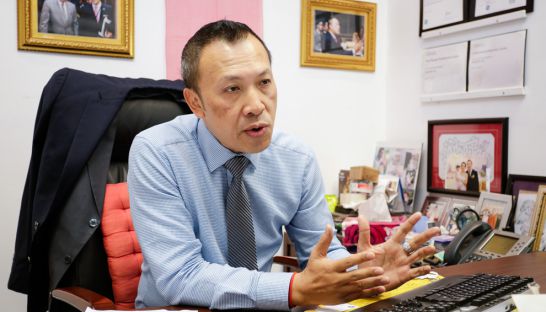Tapping into Cambodia’s energy sector
Tapping into Cambodia’s energy sector
The Cambodian government plans to reduce electricity costs by 2020, a goal that has bred a lot of partnerships with both local and foreign energy companies. Dararith Lim, country leader and director of market development at General Electric, sat down with the Post’s Cheng Sokhorng to talk about its investment in Cambodia’s energy sector.

How important is the development of Cambodia’s electricity sector in increasing industry investment and competition?
As we know, energy plays an important role in Cambodia and is a point of focus for the government when it comes to attracting foreign investment to Cambodia. The price of electricity is also very important as the electricity cost in neighbouring countries has become increasingly more competitive.
The government is investing in, and encouraging, the private sector to develop and build hydropower and coal-fired plants to provide access to all the industries that need power. I hope that all electricity prices will soon lower as a result. I understand that the government is improving electricity infrastructure as well.
GE signed a $1 million agreement with EDC in December 2014 to improve Cambodia’s electricity grid. What did this deal entail and how has it been implemented?
In December 2014, there was a GE consultant team who signed a contract for a grid study with the EDC, the state-owned electricity power company in Cambodia. They are the main utility that provides the national grid and that supports grid resolution across the country.
In the $1 million agreement, we provided software and hardware to EDC for the national grid and EMS (energy management system) for five years. We also looked at the wiring of their grid system to see how reliable it was as well as the security of the system. We provided them with information on what they had done right and what they can improve on moving forward.
Also, as part of the $1 million contract, we agreed to offer EDC software maintenance for five additional years and to provide them with skills training and access to the software for the national centre that controls the energy management system.
What problems have you identified with the national grid and how can they be remedied?
There were no problems in the actual grid infrastructure, only ways in which the government could improve electricity access. For me, I did not see many big challenges. I see opportunity since our economic growth rate is around 7 per cent. The fast growth in the economy within a very small yet dynamic population helps the government make fast decisions; which is why GE brings technology to support the government’s energy, aviation, health care, water, and oil and gas sectors too.
How much has GE invested in Cambodia since arriving in 2007 and where has it invested?
GE is a huge company that made $150 billion in revenue with 400,000 employees last year. It’s hard to figure out how much revenue was made from Cambodia out of the $2 billion made from ASEAN countries.
But we invested $14 million in Cambodia between 2008 and 2015, provided technological equipment to help patients in 31 hospitals across the country, a biomedical training school and a clean water project. GE does not make a huge profit here, but helps the government by promoting human resources.
Cambodia allows 100 per cent foreign ownership. How does its investment climate compare to other markets that GE is invested in?
It is one of the fastest growing ASEAN economies and has a very young dynamic labour force, so it will need a lot of infrastructure and investment. Cambodia plays an important role in ASEAN because the government is able to implement things much faster. GE has a lot of opportunities in the Cambodian market.
Have there been any new developments in GE’s other fields in Cambodia?
ALSTOM Energy is now part of GE since last year; in a partnership we call GE-ALSTOM Power and Grid, providing us with a focus on sustainable and renewable energy. GE has experts and technology that engages with coal and hydropower technology in Cambodia as well as with oil and gas.
So GE is looking at how to work with local investors on how to build human resource capacity. GE is looking to provide service for key industries in any energy sector.













